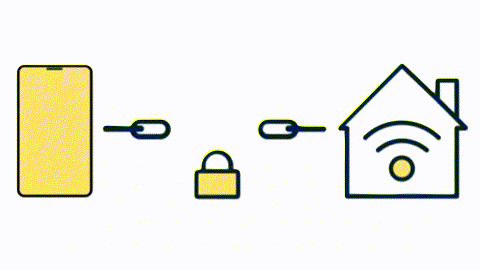Satellite internet plans in Canada
What is satellite internet?
Imagine browsing the web from the middle of nowhere—like a remote countryside, a boat out at sea, or even a mountain cabin. That’s all possible with satellite internet! Unlike DSL or fiber, which rely on underground cables, this technology uses… satellites orbiting the Earth.
What satellite internet providers are available in Canada in December 2025?

Starlink
Backed by SpaceX and Elon Musk’s big ideas, Starlink uses low-orbit satellites (550 km up) to slash latency down to 20-40 ms. With speeds ranging from 50 to 200 Mbps, it’s giving fiber a run for its money. Available across Canada since 2022, it’s perfect for remote workers and households that need solid internet.
Starlink has three plans in Canada:
- Residential for $140/month,
- Roam 50 GB for $70/month,
- Roam Unlimited for $189/month.

Xplore
Xplore (used to be Xplornet), a Canadian company that’s all about bringing internet to far-off places, has two satellite plans powered by geostationary satellites (36,000 km up) that reach everywhere in Canada, even way up in the Far North.
- The Sat 50 – 350 GB plan gets you up to 50 Mbps for downloads and 5 Mbps for uploads, with 350 GB of data each month, starting at CA$99.99 a month.
- The Sat 100 – 500 GB plan steps it up with 100 Mbps downloads and 10 Mbps uploads, plus 500 GB of data, for CA$129.99 a month.
Xplore vs Starlink
|
Criteria |
Xplore |
Starlink |
|
Coverage |
Remote areas of Canada, including the Far North |
Wide coverage across all of Canada |
|
Technology |
Geostationary satellites (36,000 km) |
Low-orbit satellites (550 km) |
|
Speed (Download) |
50 Mbps (Sat 50), 100 Mbps (Sat 100) |
50 to 200 Mbps |
|
Latency |
Higher (around 600-700 ms) |
Low (20-40 ms) |
|
Equipment Cost |
No antenna cost (just the monthly plan) |
Antenna cost ($249/month) |
|
Monthly Price |
$99.99/month (Sat 50), $129.99/month (Sat 100) |
Starting at $140/month |
|
Pros |
|
|
|
Cons
|
|
|
How does satellite internet work?
Wifi Satellite is a technology that uses satellites orbiting Earth to bring you internet access. How does it work? It bounces data between a terminal set up at your place and a satellite, no ground cables needed. It’s perfect for spots without fiber, DSL, or cell service, letting you get online even in the middle of the countryside, out at sea, or up in the mountains.
How it works in 3 steps:
- Sending to the satellite: Your request (like loading a video) goes from your satellite terminal to an orbiting satellite.
- Relay back to Earth: The satellite passes your request to a ground station hooked up to the internet.
- Data comes back: The data (such as that video) travels from the satellite to your terminal, then to your devices via Wi-Fi.
Where’s it mainly used?
- Rural/remote areas: Countryside, mountains, or regions without fiber or cable.
- Mobile settings: Boats, planes, RVs.
- Emergency situations: Disaster zones (fires, floods) to get communications back up.
- Temporary projects: Construction sites, outdoor events.
Compare Satellite Plans - Best Deals for December 2025
Looking for internet in rural or remote areas? Satellite providers like Xplore and Starlink offer reliable connectivity where traditional options fall short.
Compare their plans below to find the one that fits your needs — whether it’s for everyday browsing, streaming, or staying connected off the grid.


The Sat 50
50 Mbps
350 GB


Roam 50

How to get satellite internet?
With thousands of Canadian households still without high-speed internet, satellite internet is stepping up as a vital solution, especially in rural and remote areas. Here’s how to get connected, keeping Canadian realities in mind

Check geographic availability
- Target underserved areas: Satellite internet shines outside big cities—like the Canadian North, remote parts of British Columbia, the Prairies, etc.
- Local providers: In Canada, go for Starlink (nationwide coverage, except the extreme North) or Xplore Internet (formerly Xplornet), a Canadian leader with plans tailored for rural needs.
Compare technical offers and pricing
- Check out PlanHub or the providers’ official websites to weigh your options.
Set up the equipment
- Self-installation (Starlink): It comes with a kit—featuring a rectangular terminal and a durable cable designed to withstand extreme cold. Use the mobile app to position it (ensure it’s clear of spruce trees or buildings).
- Professional help (Xplore): Certified techs handle it, ensuring perfect alignment despite snow or permafrost. Cost: usually rolled into the plan.
Plan for weather challenges
- Defrosting the equipement: Pick a heated model (like Starlink’s “Frost Guard”) to stop ice buildup.
- Winter stability: Raise the terminal to avoid snowdrifts, or mount it on a pole for extra security.
Don't miss opportunities

Satellite Internet vs. Residential 5G Internet
Criteria | Satellite Internet | 5G Home Internet |
Average Speed | 50 to 300 Mbps (varies by provider and traffic) | 100 to 1,000 Mbps (near 5G mmWave towers) |
Latency | 30 to 100 ms (LEO constellations like Starlink) | 10 to 25 ms (great for gaming and video calls) |
Geographic Availability | Everywhere, even up to 80° North (Nunavut) | Within 20 km of 5G towers (still expanding) |
Weather Reliability | Signal drops during heavy snow/rain storms | Stable unless extreme storms (mmWave sensitive) |
Monthly Cost | $99 to $140 | $60 to $120 (equipment often included) |
Contract | None | Often 12 to 24 months |
Data | Unlimited (except budget plans) | 300 GB to unlimited (Bell/Rogers) |
Installation | Self-install possible (terminal needs positioning) | Requires a technician (5G box setup) |
Subsidies | Varies by province | Rare |
A new competitor for Starlink and Xplore: Blue Origin (Amazon)
The satellite internet race just got a new player: Amazon, through Blue Origin (Jeff Bezos’ space company) and ULA. On April 28, 2025, the U.S. giant cleared a major milestone for its Project Kuiper, launching 27 satellites into low Earth orbit. The goal? To build a network of 3,200 satellites in the coming years to connect rural and remote areas, directly competing with Starlink (SpaceX) and Xplore.
Blue Origin’s promised speeds
With promised speeds of up to 400 Mbps, Project Kuiper is targeting users of Viasat and HughesNet, but also Starlink and Xplore, potentially matching their performance. It’s a bold move, especially since SpaceX dominates the field with 6,750 satellites already in orbit and millions of subscribers.
Still, Amazon is banking on its financial muscle ($10 billion invested) and tech ecosystem to catch up. The project could bolster AWS, its cloud service, and might even integrate with Amazon Prime down the line.
When will Blue Origin be available?
Pixel 10: First WhatsApp Calls via Satellite
Google announced that the new Pixel 10 phones will be the first to enable voice and video calls on WhatsApp via satellite. Launching on August 28, 2025, the feature will rely on SpaceX’s Starlink cellular service, currently offered through T-Mobile. It’s designed to help users stay connected in areas without regular coverage. However, the service will be limited to participating carriers, and questions remain about call quality and network stability.
Key Takeaways
Go for satellite if:
- You’re in a remote area (more than 20 km from a 5G tower).
- You need it for heavy remote work or 4K streaming.
- You’re okay with a higher upfront cost but can tap into subsidies.
Pick fixed 5G if:
- You’re in a suburban area (like Eastern Townships or Central Alberta).
- You’re into online gaming or virtual reality (super-low latency).
- You want an affordable, plug-and-play option.
FAQ
What is satellite internet?
How does Satellite Internet work?
Is satellite internet a good option in 2025?
How do I get satellite internet in Canada?
How does Starlink work?
What’s the real speed of satellite internet?
How much does Starlink cost in Canada in 2025?
How much does Xplore (ex-Xplornet) cost in 2025?
Can I test satellite internet before committing?
Yes! Most providers, like Starlink and Xplore, give you a 30-day trial with no strings attached. Use it to test signal stability during a storm or peak hours.



 Chat with
Chat with 
